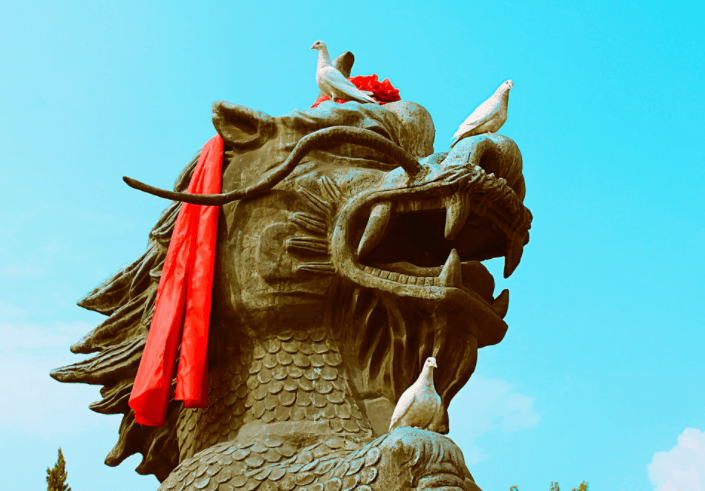When I took a closer look at the Chinese market at the beginning of the year, the investment landscape in China was different than it is here at the end of July 2021. The problems started back in February when the trade war with the US intensified. But the real turning point came when investor concerns arose about the Chinese government interfering with (and later preventing) Alibaba’s IPO of Ant Financial. Subsequently, there have been a number of other actions and fines against several of China’s largest tech companies, including Alibaba and Tencent.
The next big move downwards came over the summer, when the Chinese government opened an investigation into ridesharing service DiDi for unfair competition a few days after its IPO in the US. A few months later, the government ordered DiDi’s app removed from the app stores. In mid-July, the Chinese government issued several restrictions and decisions that effectively prevented Chinese online education companies from monetizing their apps, including New Oriental Education & Technology Group Inc and Koolearn Technology Holding Lt. Each fell 47% and 33% respectively in a single day and lost 90% of their value in a week.
An analyst told Bloomberg on July 26th “I see panic selling in the market now as investors are pricing in a possibility that Beijing will tighten regulation on all sectors that have seen robust growth in recent years“. In the same article, JPMorgan Chase & Co. is quoted as stating “The worst-case became a reality“. When I read these kinds of headlines and analysis, I really start to get interested. We are now approaching a situation that John Templeton would describe as “the maximum point of pessimism”. If it is a temporary uncertainty and not a permanent change, there is an opportunity to make one or more good trades.

Realities vs. headlines
If we look at the price development of the Chinese market, it has taken a very significant downward correction. In fact, more than 25% from the peak to current levels at the end of July 2021, which many define as a bear market. Below is the long-term price development for the world’s largest Chinese ETF, iShares MCHI, which contains the 715 largest Chinese companies.
MCHI Chart
by TradingView
If we look at the long-term consequences of the Chinese government’s actions, they have, at the very least, created great uncertainty about the future earnings potential of Chinese companies. How much impact the policy will actually have on Chinese companies is very difficult to assess at this point in time. One thing is certain: the market hates uncertainty. And when a sector’s biggest companies can fall by 90% in a week (online education), many investors get scared and hit the ‘sell’ button. This really accelerated the snowball’s downward journey.
Let’s zoom out a bit and look at the arguments for and against investing in China with an investment horizon of 5-10 years (there are actually hundreds of arguments for and against, but in the interest of everyone, I’ve chosen to highlight the most important ones below).
Against investing in China, it can be argued that:
- The trade war with the US will continue and intensify, leading to a decline in Chinese exports, which will put downward pressure on Chinese companies’ revenue and earnings.
- The Chinese government will continue to tighten regulations, which will limit companies’ earning power, like the online education sector in July, and their ability to raise capital through IPOs and sales.
- The government will keep unemployment artificially low by interfering with the operations and hiring policies of major corporations, which will increase their costs (wages) and lower their margins (profitability).
- It’s becoming more difficult for foreign investors to invest in China, which means fewer buyers and therefore lower prices. The US has enforced the delisting of named Chinese companies listed in the US (the so-called ADRs), e.g. China Mobile. Similarly, the Chinese government has made it more difficult to conduct IPOs of Chinese companies outside of China.
- The ultimate worst case scenario is an expropriation of all or parts of Chinese sectors, as happened after Mao’s 1949 revolution. Here, both Chinese and international investors lost everything. However, only twice since 1900 have investors in a stock market had everything expropriated (the other example is Russia after the 1917 revolution).
To invest in China, it can be argued that:
- The Chinese government has an expressed desire to boost prosperity in the country and has a policy goal of doubling GDP over the next ten years. To ensure increased economic prosperity, the country needs to be able to export goods to the rest of the world and maintain the millions of jobs created by large Chinese companies. This puts a limit on the extent of the crackdown that the Chinese government will impose on its companies, as it lowers their competitiveness and can cost jobs.
- Looking at the actual economic development in China, the government has been able to turn its goals into reality. China has had one of the strongest economies in the world over the past 20 years and the trend looks set to continue. The economic wealth per adult in China (“wealth by adult”) has grown by 14.9% on average from 2000 to 2020, compared to 8.8% in India and 4.8% globally. Credit Suisse states in its Global wealth report 2021“China has made by far the biggest contribution to emerging market growth this century and this dominance should continue” (the report is one of the best macro reports available and is highly recommended). The IMF expects the Chinese economy to grow by 12.6% in 2021 and 6.9% in 2022.
- It was in China that COVID-19 was first discovered, but the Chinese government was able to control the infection relatively effectively despite a very high degree of uncertainty about the disease early on. As a result, in2020, China was the only major country in the world to have positive GDP growth – even at 4% versus a decline in GDP in the US of approx. -3% and many European countries between -5% and -10%.
- There is a similarly high level of political pressure and regulatory risk when investing in many of the US tech giants. Both because of privacy violations and the antitrust situation. If we look at the antitrust cases that the Chinese government is pursuing against the big Chinese tech companies, they do not differ significantly from the cases that are ongoing in the US and EU against e.g. Google, Apple and Amazon. For example, in 2018, Google was fined €5.2 billion in antitrust by the EU. The fine was USD 2.1 billion versus Alibaba’s fine of USD 2.1 billion. in April this year for abuse of its monopoly status.
- The delisting of specific Chinese companies in the US has forced many US investors to sell shares in these companies (or relist them on a Chinese exchange). This has put negative pressure on prices, but at the same time created an opportunity for Danish investors, who can buy shares directly in, for example, Hong Kong, to take advantage of the situation and buy up.
These are real and valid arguments both for and against investing in China. My own assessment is that the arguments for investing in Chinese companies should outweigh the arguments against. For the same reason, I have ‘put my hand on the hob’ and invested a small part of my own portfolio in China over the past month. When the market is panic selling and there are good companies to buy on sale, my experience is that you typically take less risk and will have a better long-term outcome than when everything is rosy and prices are correspondingly high.
If you want to invest in China in the current market, my recommendation would be to invest a smaller portion of your total portfolio, e.g. 5, 10 or 20% depending on your own assessment of the situation and your risk appetite. In the next post on this page, we’ll dive into two specific Chinese companies that I believe are attractive at current levels.
Hear Munger's and Li Lu's assessment of the Chinese market
If you want to learn more about investing in China, I recommend the video below from August 2018. It’s a bit raw and informal (and in Chinese/English), but provides a candid assessment of the investment landscape from two of the world’s most successful investors, both with extensive experience in Chinese affairs: Charlie Munger (Berkshire Hathaway and Daily Journal) and Li Lu (Himalaya Capital Management).




